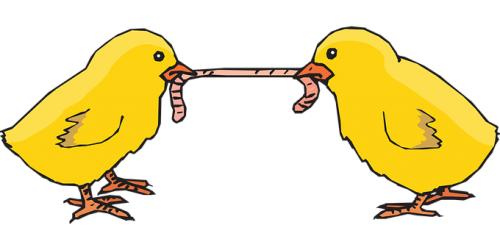More people are eating bugs – but is it ethical to farm insects for food?

More people are eating bugs
– but is it ethical to farm
insects for food?
insect farmers
 Matan Shelomi
Matan ShelomiAssociate Professor of Entomology, National Taiwan University
insect farmers
What is the life of a cricket worth?
Insect farming is a rapidly growing industry,
with hundreds of companies worldwide
rearing insects at industrial scales. The global
value of insect farming is expected to surpass
US$1.18 billion by 2023.
Farmed insects, or “mini-livestock,” refers to
insects such as crickets and mealworms
raised for the sole purpose of being sold as
food or animal feed.
These are not the fried tarantulas on a stick
hawked to tourists or scorpion lollipops sold
as novelties. High-protein insect powder can
be used in foods from breads to buns, pasta
and protein bars. Such products are already
available in countries including the U.S.,
Switzerland and Finland.
promotion of edible insects in new markets, I
have seen how much progress has been
made in the past decade in normalizing the
idea of eating insects worldwide. Now is the
time to evaluate the ethical aspects of insect
farming.
Insects for humanity
The main motivation for edible insects’ rising
popularity is environmental. Producing 1
kilogram (2.2 pounds) of insect protein
requires about 10% of the feed, water and
land used for the same amount of beef
production, and releases as little as 1% of the
greenhouse gases. Insects have a lower
environmental impact even compared to other
meat alternatives like dairy, gluten and
mycoprotein.
Raising insects on waste products significantly
ups these benefits. Black soldier flies can be
raised on agriculture byproducts like
vegetable peels or spent grains. The larvae
are then used as feed for fish and poultry,
recycling waste and reducing reliance on
more expensive soymeal and fishmeal feeds.
insect farmers .
Besides being big business, insect farms also
provide important sources of protein and
income for rural households. They can be
established cheaply, with little space, and are
a boon for smallholder farmers who lack the
resources for livestock, all the while
sustainably providing feed and fertilizer.
A good example is the “Insects for Peace”
program that has helped ex-combatants in
post-conflict Colombia with their reintegration.
The former soldiers have found livelihood
farming black soldier flies, which are used as
a feed component for livestock.
Is insect meat cruelty-free?
An additional bonus is that insects do not
evoke much empathy. With exceptions, even
vegetarians rarely think twice about swatted
mosquitoes, let alone the millions of
agricultural pests killed when farming crops.
Those who do mind can rest assured that
farmed insects lead net-positive lives, with no
fear of predators or starvation. Insect welfare
is conveniently easy: While cramped, hot,
filthy settings in factory farms are cruel for
vertebrates, they are ideal for insects like
mealworms that thrive when crowded
together. One can imagine that there are not
many requirements to set up a humane
cockroach farm, though one’s neighbors
might disapprove.

Scholars and advocates believe that the mass
slaughter of insects should be done in the
most humane way.
Remy Gabalda/AFP via Getty Images
The slaughter of insects is another issue.
Recent surveys of U.K. insect farmers found
many are concerned about insect pain
perception and providing their mini-livestock a
“good death.” The most common slaughter
methods large-scale insect farmers use are
freezing or freeze-drying, with the
assumption that the cold-blooded insects will
humanely fall asleep and never wake up.
While insects can and do sense physical pain,
they likely do not do so consciously.
Invertebrate neurologist Shelley Adamo notes
that many insect behaviors are “incongruent”
with pain as mammals experience it, citing
reports of insects walking normally on broken
legs or mantids mating while their partner
eats them alive. Entomologist Craig H
Eisemann’s influential review of the field, “Do
Insects Feel Pain?,” concluded that they are
missing too many neurological, chemical and
behavioral signs for a pain state.
Nonetheless, scholars such as Eisemann and
other advocates agree that insects should be
farmed and killed with the assumption that
they do feel pain. That means the slaughter
method should be as quick and painless as
possible.
While certainly less potentially painful than
boiling, as extreme heat is known to induce
pain responses in insects, freezing is slow.
Shredding is a popular alternative: At their
small size, insects can be reduced to powder
almost instantaneously, before they could
sense any pain. Current surveys suggest
public perception of pulverization is still
negative compared with freezing, but insect
farmers increasingly view it as the more
humane choice.
The low probability that farmed insects suffer
pain, if they can “suffer” at all, combined with
the environmental and social benefits of
insect farming, caused philosopher Chris
Meyers to argue that eating insects is not only
morally acceptable but also morally good.
This idea gave rise to the term “entovegan.”
Like pescatarians follow a vegetarian diet but
still eat seafood, entovegans happily eat
arthropods, secure in the knowledge that
their diet is both sustainable and ethical.
How much are insect lives worth?
What gives some strict vegans pause is the
sheer number of insects involved.
In a 2020 preprint, animal welfare activist
Abraham Rowe calculates that 1 trillion to 1.2
trillion individual insects are farmed annually
for food and feed, not including harvested
wild insects. On average, 79 billion to 94
billion farmed insects are alive on farms
globally in any given day, compared with only
about 22 billion chickens, Earth’s most
popular meat.
So, how valuable is an insect’s life compared
with a plant’s or a bacterium’s? Capacity for
consciousness is a popular metric for
determining if an organism has moral
standing, even though there is no agreement
on how to actually measure that.
[Get the best of The Conversation, every
weekend. Sign up for our weekly newsletter.]
If one assumes, hypothetically, that insects are
0.1% as sentient as cows, or that the
probability that insects can suffer is 0.1%,
then killing 1,000 crickets has a similar ethical
footprint as killing one cow. That may seem
generous, yet in his guide “How to Reply to
Some Ethical Objections to Entomophagy,”
philosopher Bob Fisher calculates that one
cow produces as much meat as 900,000
crickets.
The math changes, however, when one
considers how many animals die in
agricultural fields: Conservative estimates
place at least 10 million invertebrates per acre
of crops at risk from pesticides, as well as
thousands of small, undeniably conscious
vertebrates like mice and rabbits at risk from
mechanical harvesters. This math adds
millions of deaths not only to traditional meat
production through the fields of feed, but also
to almost any cultivated crops, including soy.
To quote biologists Charles Nicoll and Sharon
Russell, “There is no such thing as a bloodless
veggieburger.”
Fisher calculated that the number of insects
killed to produce a plant-based diet or an
insect-based diet are about the same,
meaning entoveganism and veganism are in
that sense equivalent. Eating insects raised on
organic wastes, all but eliminating the
environmental and animal death costs of
plant farming, may be the best option of
them all.
The rise in insect farming means questions
about insect sentience and slaughter are no
longer just philosophical: The well-being of
trillions of creatures is at stake.
- Protein
- Eating insects
- Poultry
- Veganism
- Vegetarians
- Ethical question
- Everyday ethics
- Cruelty
You might also like

Bugging out: How we’ll feed ourselves in
2167

4 reasons insects could be a staple in
Aussie diets, from zesty tree ants to
peanut-buttery bogong moths

Insect protein: dish of the day for your
environmentally friendly pet

Less meat, more bugs in our dietary
future
We believe in the free flow of information
Want to write?
Write an article and join a growing community of more than 149,500 academics and researchers from 4,427 institutions.
Find out moreBeth DaleyEditor and General Manager
Every article you read here is written by university scholars and researchers with deep expertise in their subjects, sharing their knowledge in their own words.
We don’t oversimplify complicated issues, but we do explain and clarify. We believe bringing the voices of experts into the public discourse is good for democracy.
Post Your Ad Here





Comments (4)
Golosinas Paravestir...4
fashion designer
Thanks so much!!! ☺☺☺☺☺☺
Global E learning In...9
FREE Recommendation Request/Connection Now!
world population around 9.7 billion people by 2050,
Edible insect farming encouraged by international organizationsTrends predict an increase in the population to about 9 billion people by 2050.
This steady rise in demographics implies an increase in food and feed production...
For example, the United Nations, specifically the Food and Agriculture Organization of the United Nations (FAO), encourages the consumption of insects.
This international organization emphasizes the important energ
Business-Network Hom...6
Business.Network.HomeWorker
Farm-Alternative Food and Feed-edible-insects-
Although the poorest countries will be the most severely affected by the effects of climate changes, suffering from an increase of malnutrition and poverty, the problem involves the Earth in its whole. The only way to contrast this gloomy scenario is a
global policy addressing the improvement of social and economic conditions as well as of the access to food -
The first main challenge that deserves mention is related to the acceptance of insect
Jonny Tyson12
Webmaster and Traffic Generator
Choosing to eat bugs is disgusting and unnatural, and is all part of the nwo plan to drive people away from eating meat... REAL meat. Humans were never meant to eat bugs and insects, and those that do are no longer real humans.